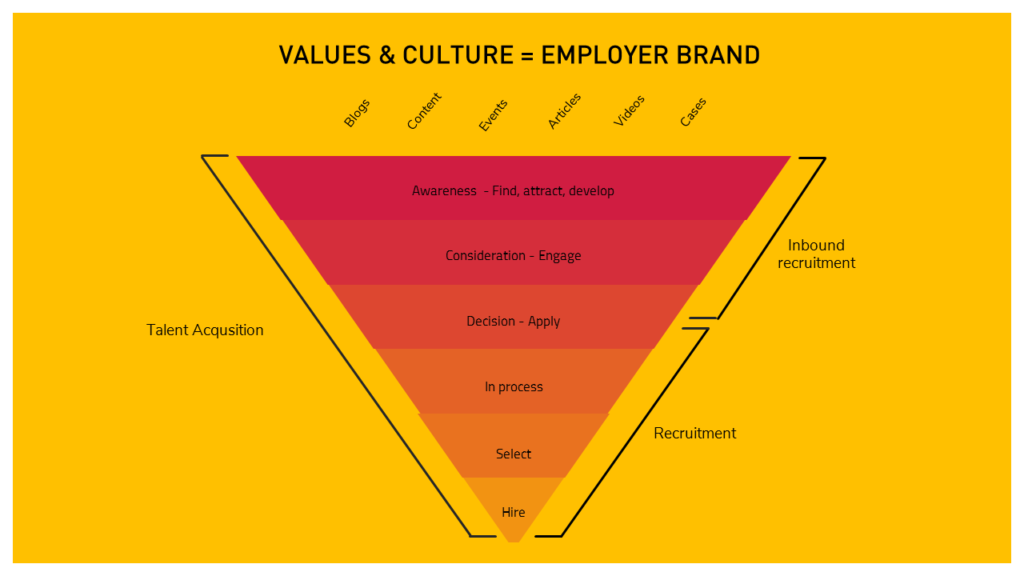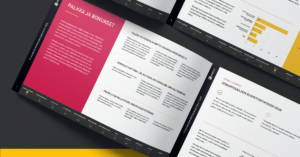IT Support & Operations
Rekrytointipalvelut IT-tuen, infrastruktuurin, järjestelmän valvonnan sekä pilvi- ja IT-palvelujen toteuttamiseen.
What does your recruitment process look like? Does it start with writing a competence profile, and then the ad, searching for candidates, choosing the candidates, interviews and then, after a lot of work, you get a signed candidate? Have you ever thought about modifying the process so that it works better for the today’s challenges? Let me explain what I mean!
Even though it’s been the “candidate’s market” for many years – few companies and recruitment agencies have adapted to it. Search – a method that has been seen as a unique method within recruitment is now a standard tool that every recruitment agency, and many inhouse recruiters, use in order to find the right talent and the critical skills needed for growth. The thing is that methods that have been new and trendy have become standard working methods. I’m not saying that we should delete our LinkedIn Recruiter accounts and quit searching for candidates, but we need to find a strategy for attracting passive candidates and start a dialog with them long before they start looking for a job.
Have you ever heard about Inbound as a recruitment method? It is both strategies and tactics an organisation uses in order to find, attract, engage and develop a dialog with talents – long before they start looking for a new job.

The method of Inbound Recruiting starts with creating awareness about your company and brand. This in order for the people to consider having you as their employer. It is in the next step that we release the job-ad, or as we call it in Inbound Recruiting – the decision stage. When a new contact has applied for the position, it is up to the recruiter to manage the contact and make them a candidate or say, “No thank you”. You are probably thinking “How can we make sure that the applications are qualified candidates?” You do that by creating content that speaks to the talents and candidates who want to work with you and who are qualified for the position. Take Google for an example. Even though the company itself is both unique and modern – it does not automatically mean that everyone wants to work for them. It’s all about being clear with in the awareness and consideration stage about who you are as a company, what your culture is like and what values you have. The clearer you are – the better and more qualified candidates you get. You might end up with fewer applications, but that is actually a good thing. Wouldn’t you rather get 5 good applications than 100 bad ones? The decision-stage and writing the job ad is another critical part of the recruitment process – but that’s for another blog!
I’ve been working with Inbound Recruiting for years now – and I’ve learned that giving examples is the best way to simplify this method. This is what most companies´ process looks like today:
The plan is for company X to recruit four .Net developers in 2020. They will start recruiting in the beginning of May. Company X starts on the competence profile and writing the job ad at the end of April/beginning of May so that the “search” work can start in the middle of May. Company X also hopes that they will get some qualified applications through the job ad they wrote. Let’s say that the recruiter will contact around 500 ”cold” candidates through their LinkedIn Recruiter account (when we talk sales we often talk about cold, lukewarm and hot leads). Out of these 500, around 25 candidates answer and two will be interviewed. MAYBE one is the right match both culture wise and technically and accepts the offer. If not – then the search process will start over and 500 new candidates will be contacted. When company X finally has all four developers signed – over 3500 individuals have been contacted just in order to find four people who’s the perfect match for the organisation.
This is what the process would look like with Inbound recruiting as a strategy:
Company X plans on recruiting four .Net developers in 2020. They will start interviewing in the beginning of May. In January they create an employer brand/people experience video that focuses on the development team. In the video – they interview both the management and the co-workers. The purpose is to build awareness around the team and what projects they work on today and what the plan is for the next 2 years. The video is sent to the marketing department and sponsored on LinkedIn. The marketing departments plan is to target .Net developers in Helsinki (since that is where the four future employees will work). People can also click on the video, and ”convert” (meaning that they can leave their contact information) under a button that say “Want more news from our development team?” Out of the 2650 .Net developers who saw the video – let’s say 50 people showed interest in more information.
In February – an employee from the team writes a blog where he or she explains why he/she chose to work for company X and what is the biggest benefit for him/her. The blog will also be sponsored towards the same target group. We also send it to the 50 people who showed interest in the team.
In May they start the recruitment process! The ad will now be sponsored for the same target group and the recruiter at the company/or HR start searching for new candidates. They start by contacting the 50 people who are interested in the company and the development team. Out of all 50 – let’s say that 15 people are qualified. The recruiter has now contacted 50 lukewarm candidates instead of 500 cold ones. Out of these 15 who are qualified – 6 are interested in meeting for an interview. Hopefully more than one candidate will be signed through these 50 lukewarm candidates – and that the search work done by the recruiter will add some more qualified candidates to the “pile”.
I’ve worked with Inbound (both sales and recruiting) for almost 5 years now – and my experience tells me that this is the best way to start a dialog with candidates who does not know what company you are. When we get more lukewarm candidates – we save both time and resources. Like I said in the beginning – the goal is not to get 100 bad applications but to get 5 good ones.

Blogi
Pitkän linjan IT-osaajat tunnistavat työnhakuun liittyvän ikäsyrjinnän. Rekrytointikonsultti allekirjoittaa väitteen ja liputtaa kompetenssipohjaisen rekrytoinnin puolesta. Kysyimme IT-alan senioriosaajilta, mitkä asiat […]
Tulevaisuuden IT-organisaatio / 8 huhtikuun 2024

Blogi
Hyvän kandin pehmeät ominaisuudet ovat uusi kova. Vaikka taidot olisivat terästä, on kaiken pohjalla kuitenkin kolme tärkeää asiaa, jotka erottavat […]
Tulevaisuuden IT-organisaatio / 3 toukokuun 2023
Oletko kandidaatti ja etsitkö uutta työtä? Ota yhteyttä täältä!
By submitting this form you agree that your personal information is processed in accordance with our privacy policy.